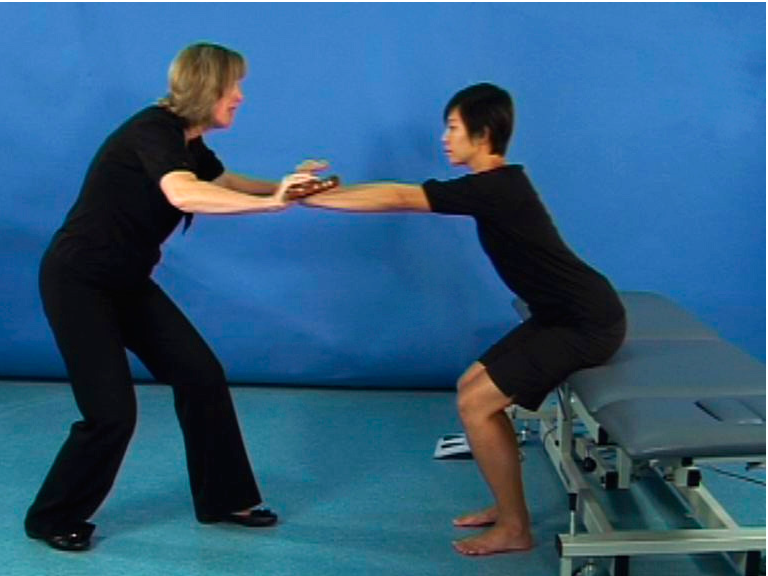AIM:
To improve standing up using manual guidance via a stick.
Rationale:
People with ataxia demonstrate dyssynergia, ie, loss of smoothness of movement due to joints being moved independently or at abnormal rates to each other. Practice is set up so that the patient is encouraged to sustain force production and to produce the normal “forward and up” trajectory of the shoulders in standing up.
This exercise aims to improve the smoothness of standing up and sitting down.
Equipment:
- Adjustable height plinth
- Walking stick
Key Points:
- Ensure patient is sitting upright with feet back prior to standing.
- Patient holds the stick horizontally in front with the shoulders flexed to 90o and elbows fully extended
- Therapist applies horizontal pressure through the stick to encourage sustained force production
- The pressure should be maintained throughout standing up and sitting down
- Patient must not pull on the stick and must keep the elbows straight
- Therapist must stand in a lunge position and move backwards and forwards with the patient, so that movement of the shoulders is not blocked
Common Errors:
- Patient’s feet are too far forward
- Therapist provides too much/too little pressure
- Therapist blocks movement
- Therapist attempts to lift the patient using the stick
- Therapist does not take patient’s shoulders back at the end of standing up and/or forward at the beginning of sitting down
Progression and Variety:
- Increase speed
- Decrease height of chair
- Patient practices without manual guidance
